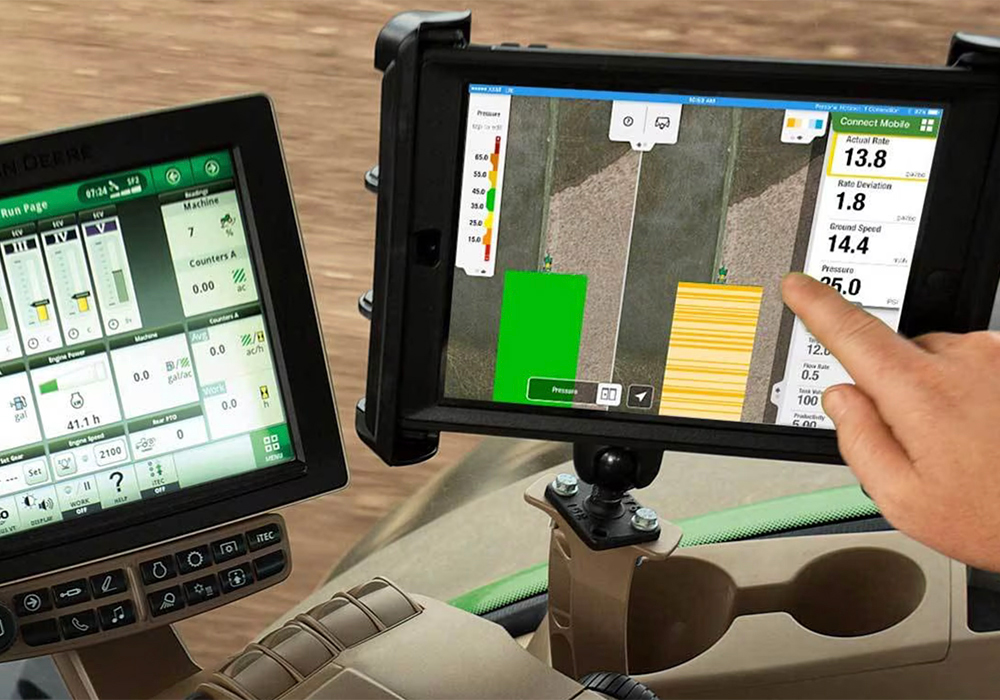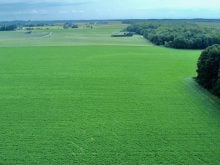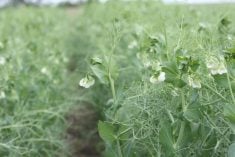Canada is positioned to lead in this technology sector but is hampered by scattered funding and information sources
Digital agriculture can help Canada’s farms manage the increasing pressure to produce food, minimize environmental impact and provide a living for farmers, but only if scattered research dollars and talent are brought together.
“We need to do a lot better if we want a food system that is more productive, that is more sustainable, and digital agriculture really is one of those enabling technologies that is going to form, that can form, part of the core of producing more with less,” said Tyler McCann, managing director at the Canadian Agri-Food Policy Institute.
Read Also

U.S. bill could keep out Canadian truckers
The Protecting America’s Roads Act, which was tabled in the U.S. House of Representatives at the beginning of October, would “rid the country of illegal immigrant commercial truck drivers and ineligible foreign nationals.”
He spoke on a panel presented by the Institute for Research on Public Policy last fall in Ottawa.
McCann said Canada is on track with the rest of the developed world, but its ratio of food production to population is dropping. Digital agriculture could play a role in addressing this problem.
Digital agriculture is the use of devices such as computers, sensors and satellites to gather, process and analyze spatial and temporal information. Such systems can, for example, guide what seed and inputs should go into the ground, when crop protection products should be applied, see how well a crop is progressing to predict yield, and gather data on yield.
It’s a sophisticated, high-tech picture not often not associated with farming by those outside the industry, and that misconception pushes agriculture technologies out of the policy sphere and out of government focus.
“There’s a perception that farming is a 19th-century industry. It’s a 21st-century industry,” said Peter Phillips, professor and policy expert at the Johnson Shoyama Graduate School of Public Policy at the University of Saskatchewan.
He said agriculture’s role has shifted and grown in recent years. It plays a part in economic growth and can help the country meet its environmental targets. But the right tools and information are missing and he points his finger at a gap between researchers, the government and the agriculture industry.
It’s a perfect time to change this, since the industry is in a growth phase and has no issues in meeting current policy objectives, according to Phillips. It’s time to increase investment in agriculture technology’s research and development and the supporting mechanisms.
Lenore Newman, director of the Food and Agriculture Institute at the University of the Fraser Valley, drew a comparison to the Netherlands and its approach. That country has recognized the importance of investment, shown in its “triple-helix approach” to agriculture innovation with academics, industry and government working together.
Newman specializes in agricultural innovation and policy. She said two of the eight sectors the Dutch government concentrates on are agricultural, which helps the country earn a shifting position of either first or second in agriculture technology around the world. Canada sits near eighth.
To improve Canada’s position, there must be a united approach along with strategic spending.
“(Agricultural research funding) was charitably described to me about a week ago as a quilt,” Newman said. “Canada has an agricultural quilt of funding. The problem is, it’s there, but you can’t find it. It’s all taken apart and no one knows where it all is, we all just have little corners of the quilt.”
She said all parties must fill holes in the quilt and do a better job of bringing the pieces together.
Phillips built on this theme, noting the world of agricultural academics is also disjointed. There isn’t enough cooperation for long-term projects and research centres are too spread out, making the national effort of agricultural technology development especially difficult.
“We’ve got a huge Ag Canada presence in Saskatchewan and NRC (National Research Council) presence (but) there’s no management there,” he said. “The manager for our labs is in P.E.I. or Summerland, B.C. You don’t do research management by being four time zones away.”
Phillips said standardization must be improved for all research work and definitions.
Another crucial challenge for digital agriculture and new technology in general is ensuring farmers understand the equipment and take advantage of its benefits.
“People get caught up in adoption,” McCann said. “It is not just adoption; it’s research and development. And if you’re developing the right technologies that make sense to farmers, they will adopt them.”
Digital infrastructure is a main part of ensuring value is returned to the farmer, he says. Recognizing the value of new technologies is a challenge for some, but it’s vital to make the case to Canadian farmers that digital agriculture is an important tool to improve productivity and sustainability.


















